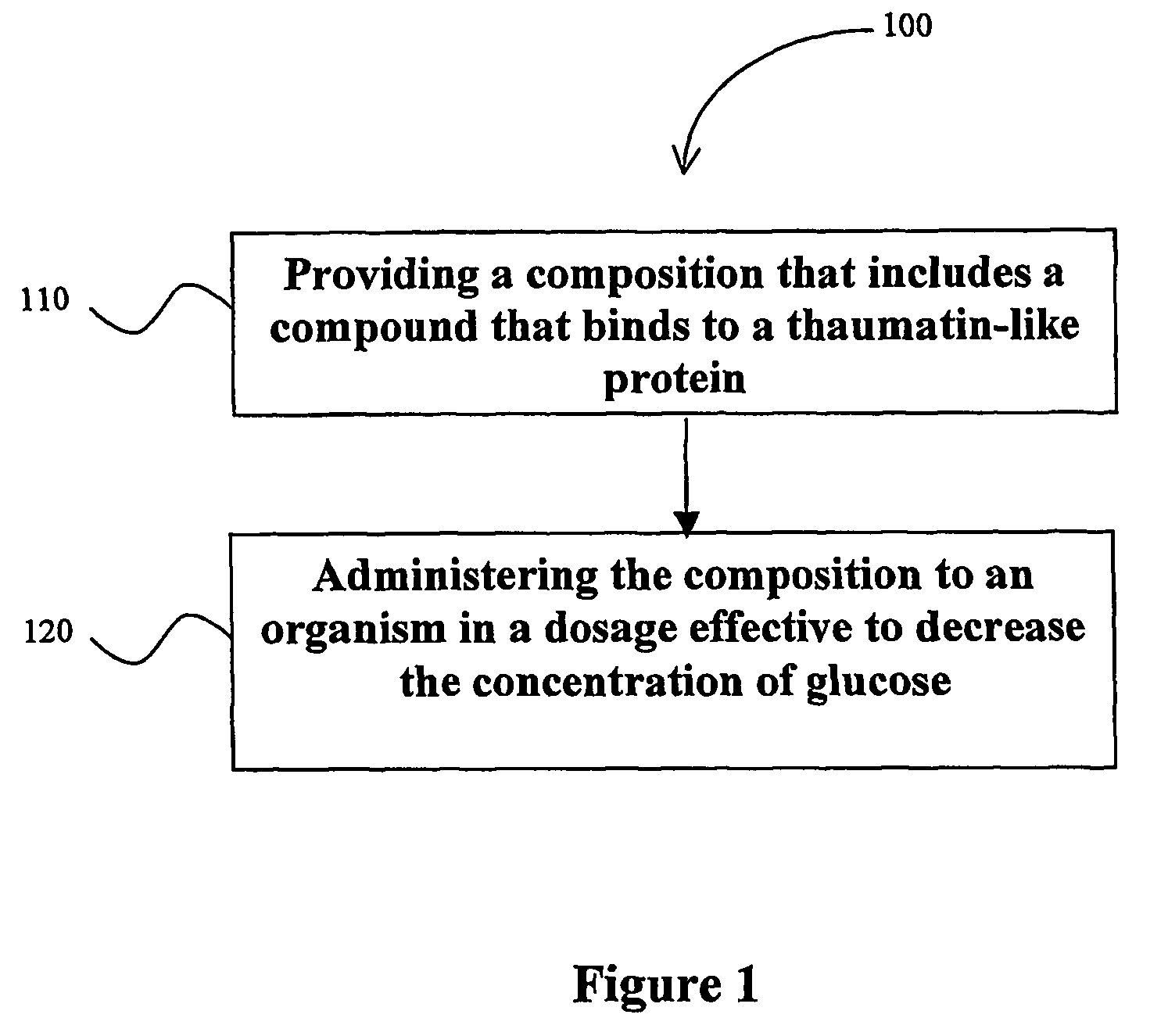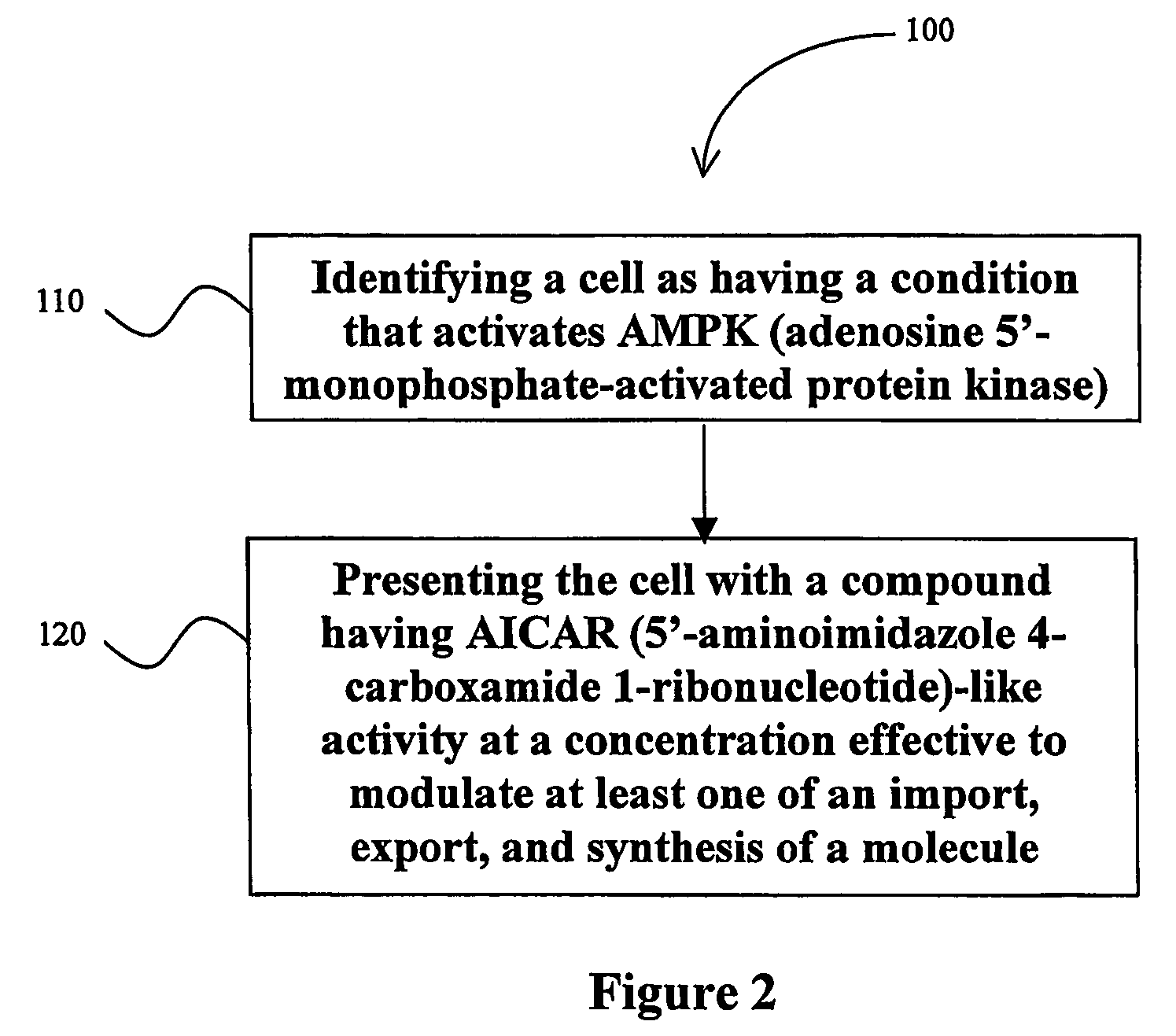Compositions and methods for treating NIDDM and other conditions and disorders associated with AMPK regulation
a technology of ampk and composition, which is applied in the field of dietary supplements and pharmaceutical compositions, can solve the problems of reducing the biological potency reducing the therapeutic effect of the yeast preparation, and affecting the treatment effect of niddm and other conditions and disorders associated with ampk regulation, so as to increase the intracellular level of activated ampk.
- Summary
- Abstract
- Description
- Claims
- Application Information
AI Technical Summary
Benefits of technology
Problems solved by technology
Method used
Image
Examples
example 1
[0060]Barley grains were malted according to procedures well known in the art of beer brewing (see e.g., Principles of Brewing Science, Second Edition, by George J. Fix; Brewers Publications; ISBN: 0937381748, or The Brewers' Handbook by Ted Goldhammer; KVP Publishers; ISBN: 0967521203). In order to extract soluble substances from the malt and to convert additional insoluble solids into soluble material through controlled enzymatic conversion, a step of mashing was subsequently applied to the ground malt (suspended in water) according to a typical brewer's schedule. The temperature cycles were as follows: Incubation at 40° C. for 60 min, incubation at 50° C. for 60 min, incubation at 60° C. for 60 min, incubation at 72° C. for 60 min, and incubation at 75°-80° C. for 60 min. Soluble portions of samples were separated from husks and other insoluble material and freeze-dried.
[0061]The freeze-dried barley extract obtained after mashing at 40° C. served as base for fractionation into it...
example 2
[0064]20 g of malted barley flour was suspended in 80 ml of water and stirred over night at ambient temperature. The suspension was supplemented with 120 ml of 0.8 M NaCl solution and salt extraction was continued for 24 hours with stirring. An aqueous extract was separated from the suspension by vacuum filtration over a cellulose filter pad. Alternatively, citrate or other buffers are also contemplated suitable for preparation of an aqueous extract.
[0065]The filtered extract was freeze-dried or vacuum-evaporated. So obtained dry malt extract (yield approx. 12-14 g) contained 5.6 g of NaCl originating from the extracting solvent and a complex mixture of water-soluble barley components. The filtered freeze-dried extract was purified by extraction with two 50 ml portions of warm ethanol under vigorous mixing for two hours. The ethanolic extracts were filtered, combined, and evaporated to an oily residue in vacuum. The oily residue was re-dissolved in 15 ml of water and freeze-dried, r...
example 3
[0068]The biological activity of LMW fractions from Example 1 (GMM-1, GMM-2 and GMM-4) and the glassy yellowish product from Example 2 was monitored by quantification of brewers' yeast fermentation rate under anaerobic conditions using a modified Warburg method (Mirsky, N. et al., J. Inorg. Biochem. 13(1):11-21 (1980), which is incorporated by reference herein.
[0069]Two grams of wet brewers yeast cells (about 20% dry weight) were suspended in fermentation medium (25 ml of 60 mM phosphate buffer, pH 5.7 and 10 ml of 5% (w / v) glucose solution), and aliquots of the products from example 1 or 2 were added to the fermentation medium for testing. Incubations were carried out in 50 ml fermentation flasks at 25° C. for 60 minutes. The fermentation rates were measured from the volume of generated CO2. All of the tested LMW fractions or the product from Example 2 showed significant biological activity or bioactivity in that they increased the yeast fermentation rate in the range of about 20-4...
PUM
 Login to View More
Login to View More Abstract
Description
Claims
Application Information
 Login to View More
Login to View More - R&D
- Intellectual Property
- Life Sciences
- Materials
- Tech Scout
- Unparalleled Data Quality
- Higher Quality Content
- 60% Fewer Hallucinations
Browse by: Latest US Patents, China's latest patents, Technical Efficacy Thesaurus, Application Domain, Technology Topic, Popular Technical Reports.
© 2025 PatSnap. All rights reserved.Legal|Privacy policy|Modern Slavery Act Transparency Statement|Sitemap|About US| Contact US: help@patsnap.com



